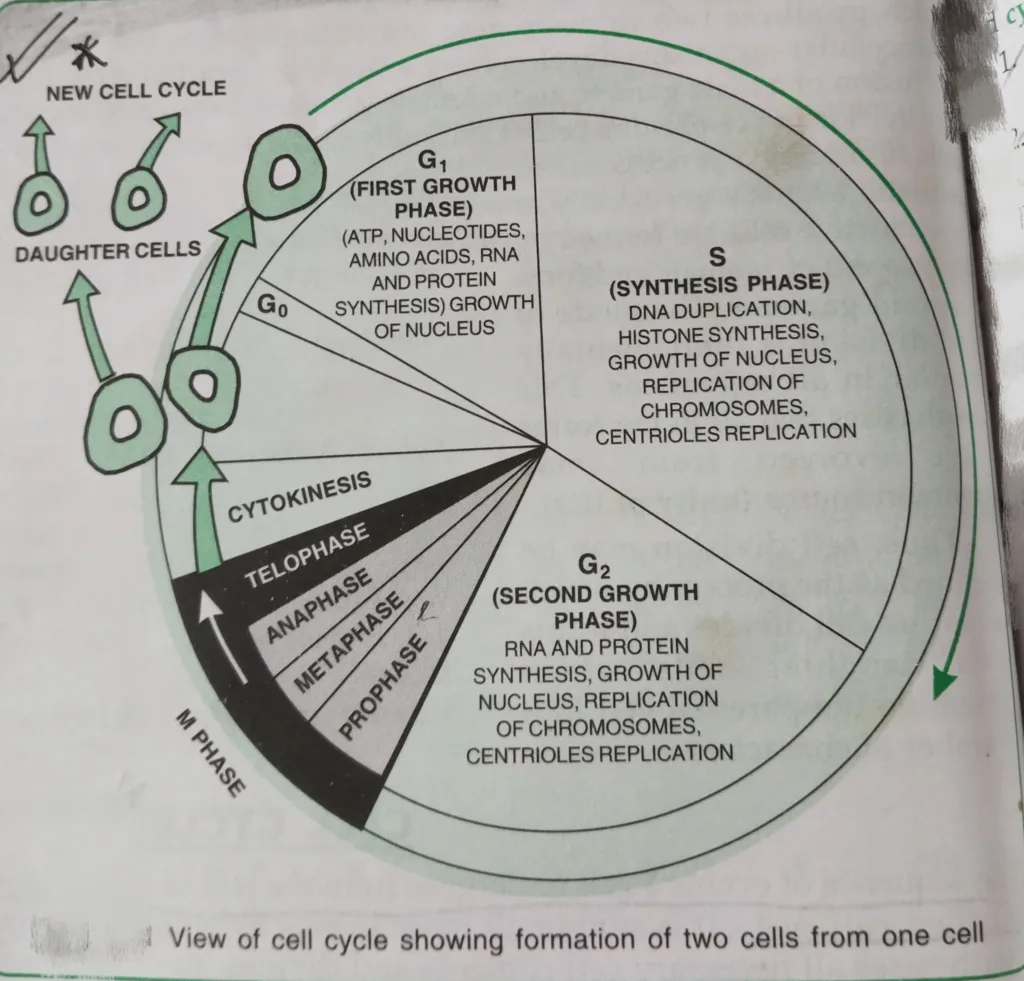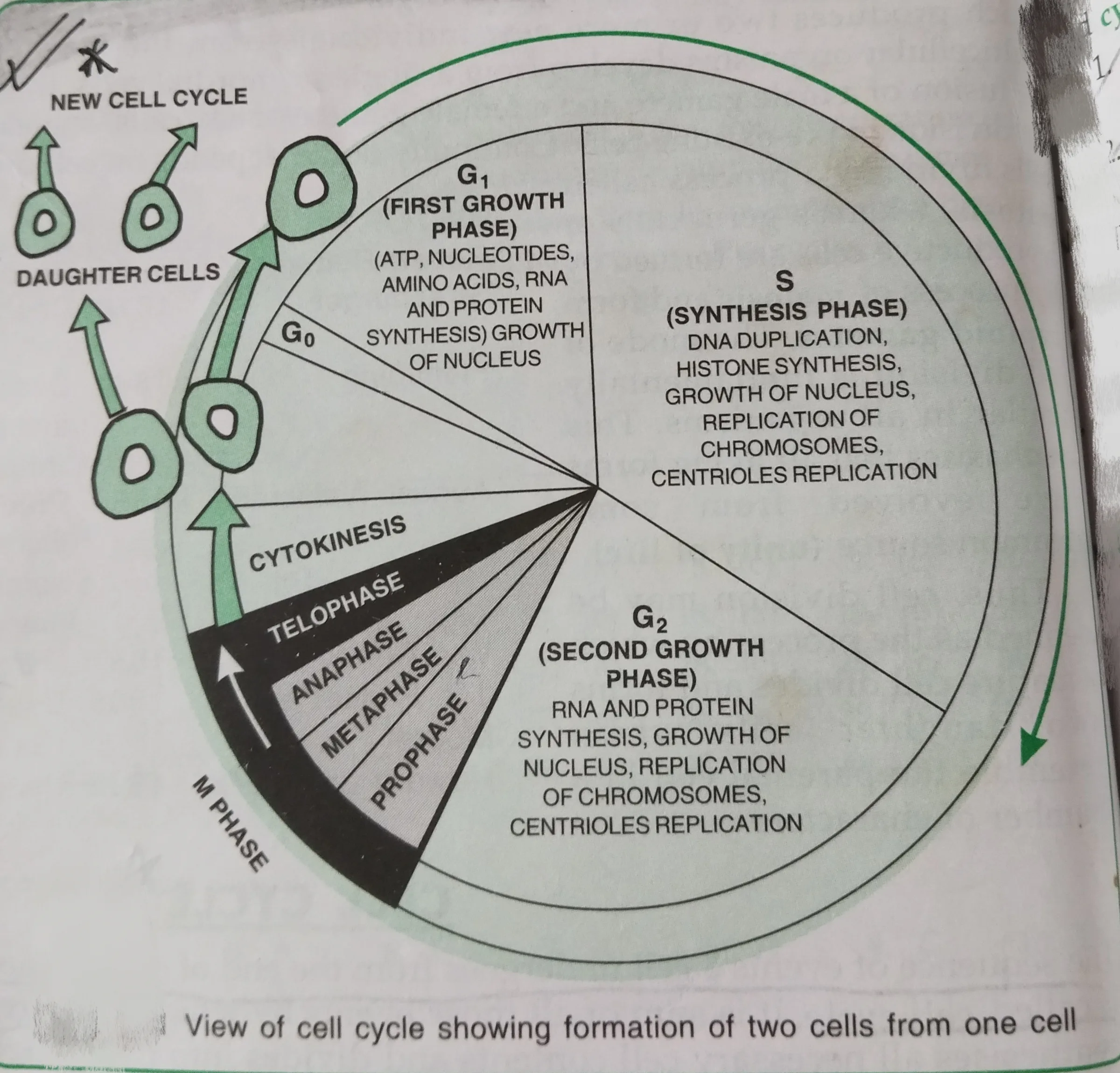Table of Contents
Cell cycle checkpoints ensures the fidelity of cell division. These checkpoints verify whether the processes at each phase of the cell cycle have been accurately completed before progression into the next phase.
An important checkpoint in G1 has been identified in both yeast and mammalian cells. Referred to as a start in yeast and the restriction point in mammalian cells, this is the point at which the cell becomes committed to DNA replication and completes a cell cycle. It is during the G1 phase that the cell integrates mitogenic and growth inhibitory signals and makes the decision to proceed, pause, or exit the cell cycle.
Cell cycle checkpoints- Types:
- G1/S checkpoint
- G2/M chceckpoint
- M checkpoint
The first two checkpoints are called DNA damage checkpoints. The M checkpoint (mitotic checkpoint) is called the spindle assembly checkpoint. These checkpoints are explained in detail below. Please go through the whole blog.
Cell cycle
To understand the cell cycle checkpoints, the basics of the cell cycle are required to know. A simple diagram of the cell cycle is presented below:

The cell cycle has two main phases- interphase and M phase.
The interphase is the time during which the cell is preparing for division by undergoing both cell growth and DNA replication in an orderly manner. The interphase is divided into- the G1 phase ( Gap 1, the phase between the end of the M phase and the start of DNA replication), the S phase (Synthesis, the phase during which DNA synthesis occurs), and the G2 phase ( Gap 2, the gap period following DNA replication and preceding the initiation of the M phase).
The period of actual division, corresponding to the visible mitosis, is called the M phase (mitosis phase).
Cell cycle checkpoints in detail
DNA Damage checkpoint
It involves a signal transduction pathway induces by DNA damage that blocks cell cycle progression until DNA is properly repaired. Its function to ensure that incomplete or damaged chromosomes are not replicated and passed on to daughter cells.
According to the cell cycle stages, these are classified into at least 3 checkpoints:
- The G1/S checkpoint inhibits G1/S phase transition in cells that have not yet committed to DNA replication.
- The intra-S checkpoint prevents the initiation of DNA replication at origins that have not yet been activated.
- The G2/M checkpoint inhibits entry into mitosis.
- The replication checkpoint, a specialized branch of the DNA damage checkpoint, monitors fork problems and triggers a cellular response aimed at preserving genome integrity.
Spindle Assembly checkpoint
- This ensures that anaphase onset is initiated only when all chromosomes are properly attached to microtubules and aligned at the metaphase plate. It monitors the correct attachment of chromosomes to the mitotic spindles.
- It prevents segregation of sister chromatids until they are properly aligned on the metaphase plate.
- During mitosis, chromosome segregation is carefully examined to prevent aneuploidy.
- When microtubules from two opposite spindle poles are attached to the kinetochores of the metaphase chromosome, tension develops across the paired kinetochores owing to the mitotic force that tends to pull the sister chromatids toward two opposite poles.
A diagram, showing cell cycle checkpoints, is presented below:

The Cell cycle is highly regulated and a dependent series of events, mediated by a number of checkpoints. Hartwell and Weinert hypothesized the existence of ‘checkpoints pathways’ by which an uncompleted cell cycle event sends an inhibitory signal too later events. In most cells, there are several checkpoints.
Go through the related notes by the clicking link below:
- Useful numbers of cell culture: https://thebiologyislove.com/useful-numbers-for-cell-culture/

